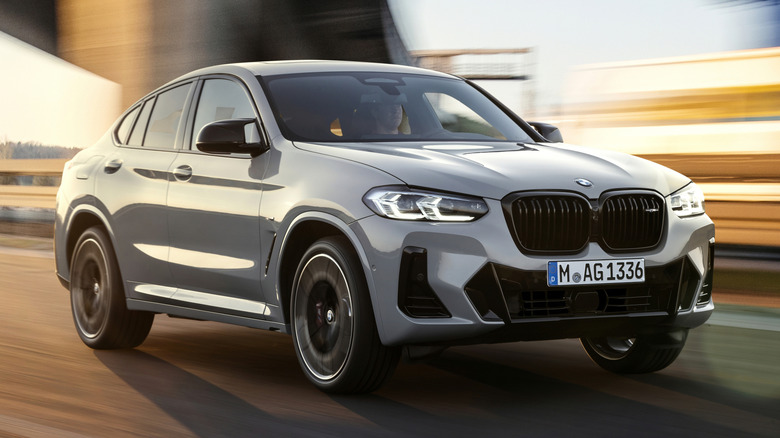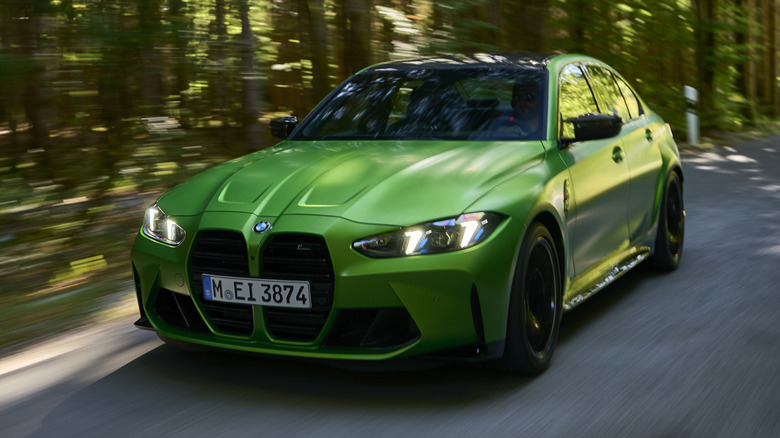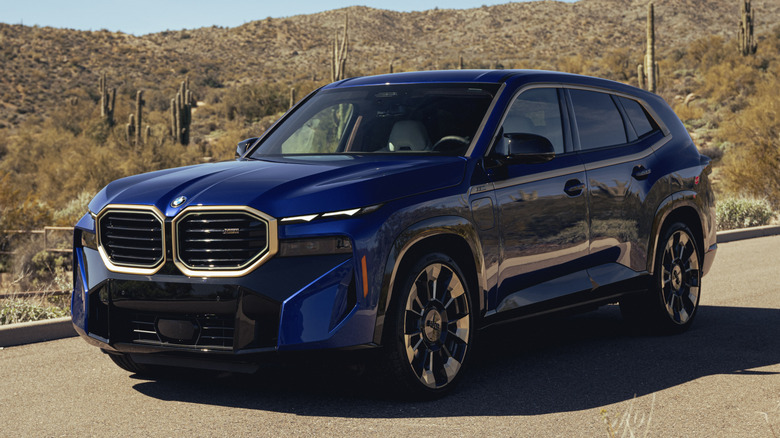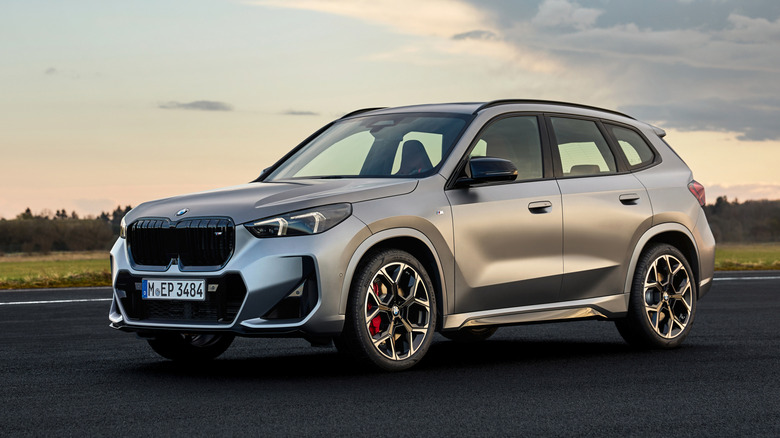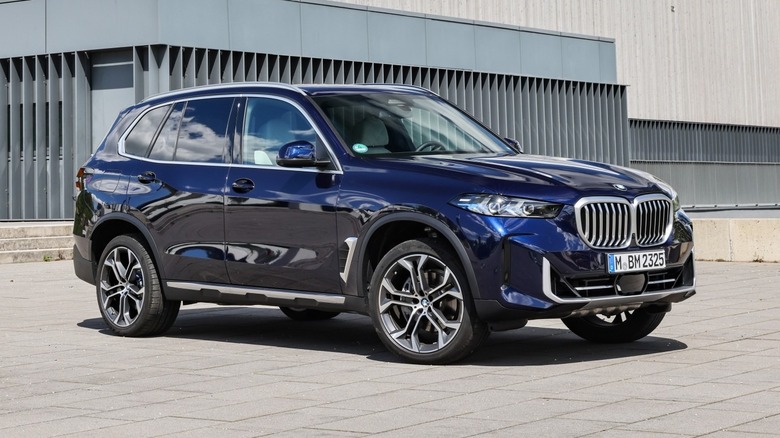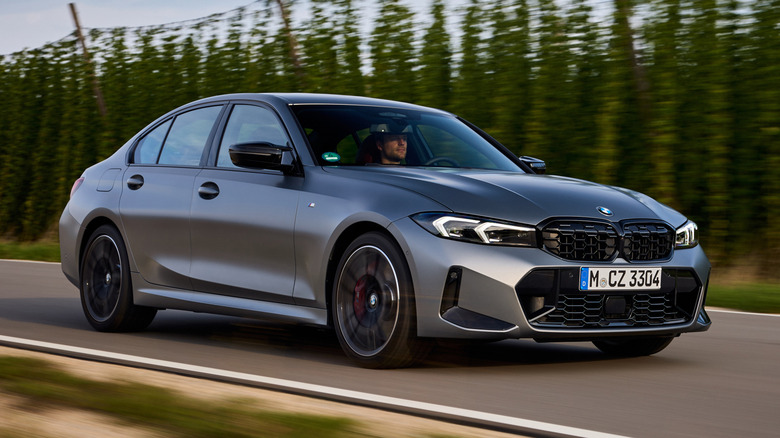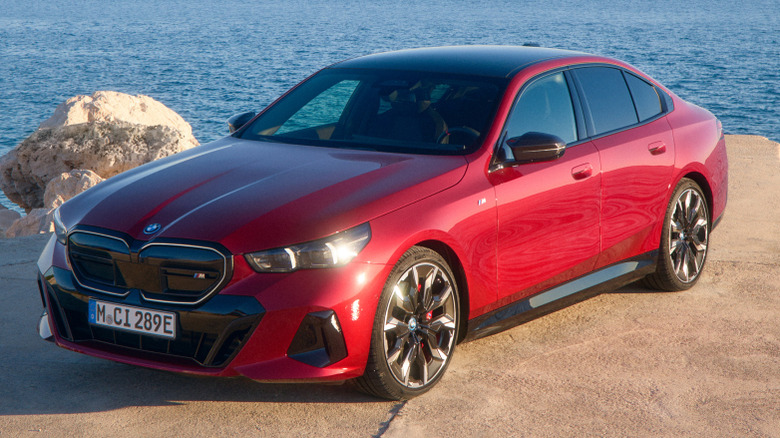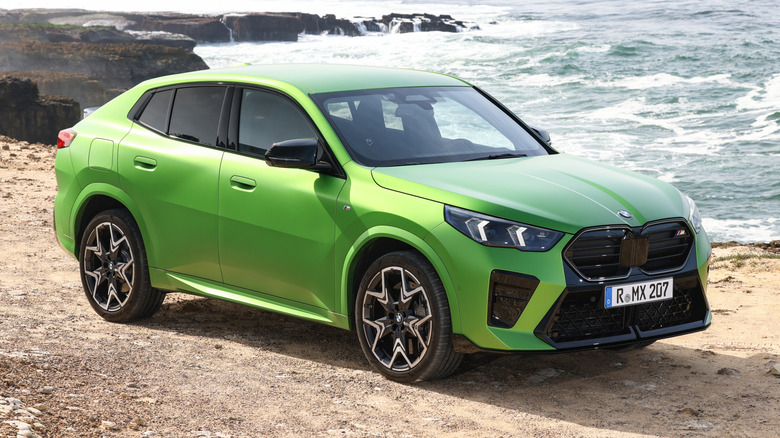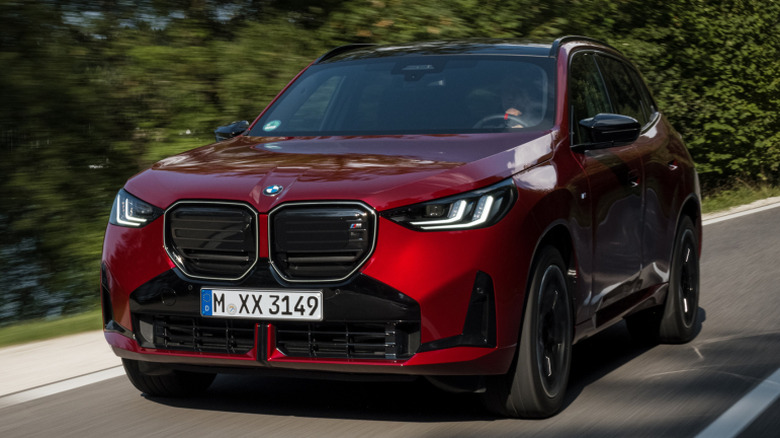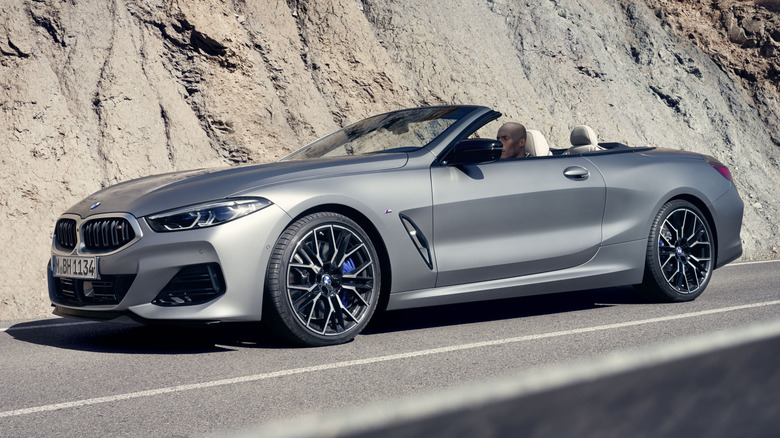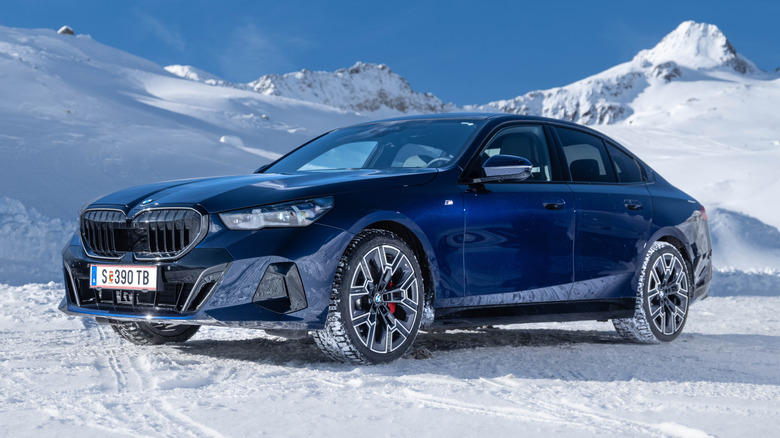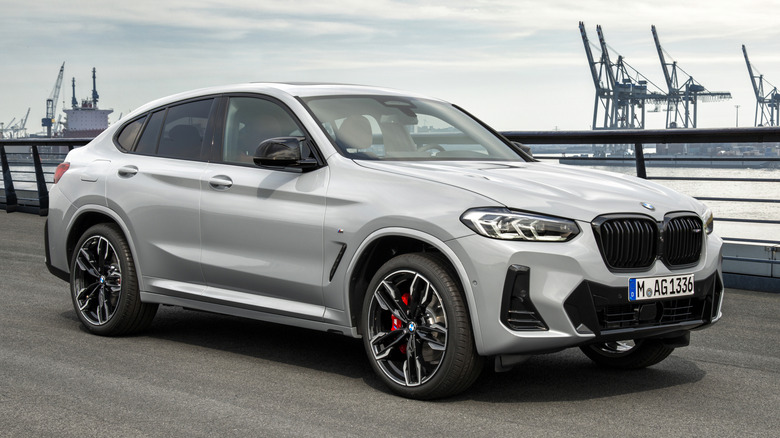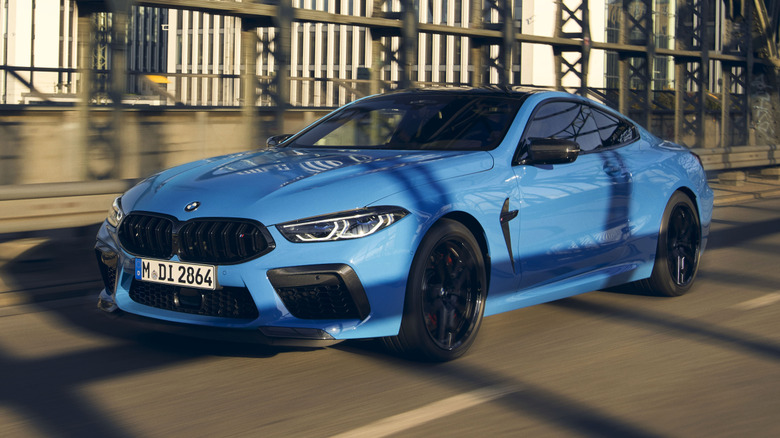14 BMW Models With The Worst Resale Value
Almost all new cars depreciate, but some depreciate faster than others. Luxury and performance cars often depreciate faster than average thanks to their higher initial price tags and expensive maintenance costs. With BMW's lineup consisting mostly of those two vehicle categories it shouldn't be a surprise that the German brand often suffers high levels of depreciation. In fact, the average new car will only retain around 40% of its original retail price after its first five years on the road.
There are a handful of models in the brand's range that buck the overall trend, with the i4 retaining around 41.14% of its value after half a decade and the M4 similarly impressing with a 43.8% value retention rate. However, most BMW models depreciate faster than the average new car. The 14 models below are forecast to retain less than 40% of their value after five years. The brand's two worst-offending models are estimated to hold less than a third of their original value after that time period, making them well worth avoiding for any buyers concerned about resale value.
BMW M3 – 39.7%
Traditional manual transmissions might be a dying breed with the rise of electrification, but enthusiasts aren't out of options just yet. The 2025 M3 still offers a manual six-speed transmission, and SlashGear tested it out shortly after the launch of the current generation. The results were predictable: BMW's best-known sports sedan is still the benchmark in its class, both for its driving dynamics and overall usability as a daily driver. It's still as sharp and engaging as ever, and since it's a BMW, it also sports a plusher cabin than many similarly sporty rivals.
The M3 depreciates slightly more than the average new car, but only by the smallest of margins. In fact, it's one of the better-performing BMW models overall, despite its not-insignificant starting price of $76,700 for 2025. The car should retain 39.7% of its value after five years on the road, although given that the current generation M3 is set to be the last without electrification, there's a chance that strong enthusiast demand could see prices remain higher over the long run.
BMW XM – 39.19%
BMW's most unique SUV is also its most expensive, with a price tag well north of $150,000 and a power output that wouldn't have looked out of place on a supercar's spec sheet a few years ago. The XM is a strange, intentionally controversial car, but despite that, it holds its value better in percentage terms than many other, less interesting vehicles in BMW's range, retaining about 39.19% of its sticker price after five years.
Buyers get a twin-turbocharged 4.4L V8 plug-in hybrid powertrain that makes a combined 644 horsepower in standard form, or 738 horsepower in top-spec XM Label form. The car's all-electric range of roughly 30 miles means that short, inner-city or suburban commutes can potentially be completed without ever needing the gas engine. Of course, that's assuming that you don't make full use of the car's unexpectedly punchy acceleration, which we found more responsive than a 6,000 pound SUV had any right to be. The XM might not make much sense at first glance, but there are few cars on the market that match its eccentricity, practicality, and daily-driving convenience.
BMW X1 – 38.9%
American buyers miss out on the 1-Series hatchback, but BMW USA does offer its crossover counterpart, the X1. After driving the current generation X1, we came away with mixed feelings, noting that the car's modest performance and efficiency-focused assistive technology made it less of a compelling option than other models in the brand's lineup. Even so, the crossover sported a suitably smooth ride around town, plus an interior that felt suitably premium for its price bracket.
The X1 is not the most impressive BMW model out there, particularly in its base trim. However, it's still a solid entry point into the BMW range, and it doesn't depreciate that much more than the average new car. A value retention rate of 38.9% puts it middle of the pack in percentage terms compared to BMW's other models, but with its lower starting price, buyers will be losing less in dollar terms over five years than most of those other models.
BMW X5 – 38.33%
Unveiled back in 1999, the X5 is BMW's longest running SUV and it has played a key role in helping to popularize the luxurious, road-focused SUV segment. Unlike previous luxury SUVs, it skimped on all-terrain capability, instead focusing on superior on-road driving dynamics. We found the latest generation of the X5 to be a fun drive, particularly the X5 M60i spec. It's cheaper than the full-fat X5 M by a considerable margin, but it still offers more power than most buyers will ever be able to use.
Despite the higher price tag, the X5 M actually retains a slightly higher proportion of its value after half a decade on the road. Owners can expect to keep 42.79% of its sticker price, while the regular X5 will retain just 38.33% of its value over the same period. Still, the standard X5 remains a mid-performer for value retention compared to BMW's other cars, and retains a higher percentage of its value than most of the brand's smaller SUVs.
BMW 3-Series – 37.22%
The 3-Series is one of BMW's best-known nameplates, leading the premium sedan segment for decades. The German automaker has introduced some tech and styling upgrades for the 2025 model year and axed the plug-in hybrid variant. Aside from that, the 3-series remains largely unchanged from previous years, with the 330i available as the base model and the M340i xDrive being the top of the mainline 3-Series range.
Although the regular 3-Series is significantly cheaper to buy upfront, it is forecast to retain slightly less value over time than the M3. While the M3 retains only a fraction of a percentage point less than the market average, the 3-Series should keep 37.22% of its value over five years. It's still more than the Audi A4, which will retain an estimated 35.37% of its sticker price over the same period, but it's a little behind the Mercedes-Benz C-Class, which should keep 38.70%.
BMW i5 – 37.0%
The American arm of BMW reported record sales in 2024, with EVs cited as a particular growth area for the brand. The i5 was a particularly strong performer, shifting 8,763 units throughout the year, a 310% increase from the previous year. We were impressed by the car's luxury and driving dynamics, and it seems buyers are also starting to warm to its charms. The i5 infotainment tech draws inspiration from Tesla and other EV leaders, with gaming features and hands-free tech that takes some of the hassle out of daily commutes.
The i5 might not be the first choice for buyers looking to test out BMW's "ultimate driving machine" slogan, but in top-spec form, it packs a suitable punch, with almost 600 horsepower on tap. It's also relatively sharp to drive on back roads, at least compared to many of its rivals. In short, there is a lot going for the i5. But for all its innovation, the car struggles when it comes to holding its value — within five years, owners can expect their i5 to retain just 37% of its original price.
BMW X6 M – 37.0%
The X6 M is a polarizing BMW SUV with more power than anyone driving on public roads could ever use. It's far from cheap to buy, with a starting price of $132,100 for the latest model year, and its thirsty engine and complex systems mean that it won't be cheap to run either. Still, we enjoyed the ridiculous top-spec X6 M Competition, with its 617 horsepower, twin-turbocharged 4.4L V8 engine. Those who can afford it are likely less concerned with resale values and that's good, because the X6 M forecast will retain only 37% of its original price.
This 63% price drop should prick the ears of second-hand buyers. The X6 M blends tire-smoking power and eye-catching styling with practicality in a way that few other SUVs can match, and it can be bought for far less than its sticker price after just a few years on the road.
BMW 2-Series – 36.96%
The 2-Series is one of the more traditional offerings in BMW's current range, with no powertrain electrification and an old-school coupe design. It also sports smaller, less divisive kidney grilles, which will delight purists. However, there's no longer a manual transmission offered, with even the base-spec, rear-drive 230i equipped with an auto box. The 230i xDrive is available for buyers who prefer the added traction of all-wheel drive, with both variants sourcing their 255 horsepower from a 2.0L turbocharged four-cylinder engine.
The M240i is also considered part of the main 2-Series range and provides a middle ground between the base variant and the top-tier M2, which is a separate model. Much like the 230i, the M240i is available in both rear-wheel drive and all-wheel drive guise. However, the more potent twin-turbocharged 3.0L inline-six engine adds significant poke, with 382 horsepower on tap. Despite its enthusiast-pleasing credentials, the 2-Series doesn't hold its value well, with only 36.96% retained over five years.
BMW X2 – 34.9%
The X2 is a coupe-styled counterpart to the BMW X1 and we thought it offers more unique styling at the cost of practicality. The X2 is less roomy inside and it isn't any more powerful, despite a slightly higher asking price. The base X2 xDrive28i starts from $42,850 excluding fees for 2025, while the X2 M35i offers more power with a $52,300 price tag. The X1, in comparison, starts from $41,350. We found the X2 less exciting to drive than other BMW models and less distinguished than similarly sized crossovers.
The lengthy options list can add a significant premium to the final asking price, making the X2 as expensive as other, more compelling models within BMW's lineup. This lack of standout quality and its quickly climbing asking price contribute to the X2's low resale value. After five years, the X2 will retain 34.9% of its sticker price — significantly less than the X1, which should keep 38.9% over the same time frame.
BMW X3 – 34.4%
Like its smaller, coupe-styled X2 stablemate, the X3 is another small BMW crossover with poor value retention. We found a lot of personality and power behind the wheel of the X3 M50 xDrive, which is punchy enough to justify its M badge. Opting for the M50 xDrive also doesn't dent the X3's everyday practicality, with its cabin being notably more roomy than the X2.
A larger cabin, power output, and number in its name dictates that the X3 should also have a larger price than the X2, and that is indeed the case. Base models are competitively priced, but top-spec models are steep considering what is on offer. Our fully loaded tester clocked in at $76,775, and many cars can be had for that kind of cash. The base-level X3, meanwhile, starts from around $50,000.
Whether buyers opt for the top-spec M-influenced variant or the run-of-the-mill X3, they shouldn't expect to hold on to much of their invested cash once it's time to upgrade. The X3's 34.4% value retention over five years makes it one of the worst-performing BMW SUVs and within the top five money-shedding BMW models overall.
BMW 8-Series – 34.17%
High-end luxury cars almost always depreciate steeply during their first few years on the road, so it shouldn't be a surprise that the 8-Series will quickly shed value after it leaves the dealership. The 8-Series is available as a two-door coupe, a four-door "Gran Coupe," and a convertible, but they are grouped to estimate their used value. The new 8-Series is projected to retain just 34.17% of its sticker price after five years.
All 8-Series variants can quickly reach six figures with options, but base-spec 840i Coupe and 840i Gran Coupe can be had for slightly less, at a starting price of $91,700 each, excluding fees. Adding all-wheel drive hikes the asking price by a further $3,000, with the M850i xDrive trims of both variants pushing the car past the $100,000 mark. The convertible is also available in 840i or 840i xDrive guise, with the former option being the cheaper, at $101,400. Moving up to the M850i xDrive brings the total to $117,000. That's a big investment, but it's still less than the M8, which is considered a separate model.
BMW 5-Series – 33.7%
Alongside the 3-Series, the 5-Series is another of BMW's longest-running nameplates. However, the 5-Series performs significantly worse than its small brother in terms of value retention, with the 2025 model predicted to be worth just 33.6% of its original value by 2030. The brand's switch to four-cylinder hybrid powertrains for the latest generation might not have helped that valuation, although the 530i xDrive we tested in 2024 certainly didn't feel underpowered. Then again, neither did it feel all that sporty, particularly compared to BMW's other sedan models.
As sensible, premium transportation, the 5-Series continues to offer much of the same appeal as it has in previous generations. The infotainment and safety tech is a step above previous iterations, though not every new addition is a welcome one — in particular, we weren't keen on the piano-black plastic, which showed dust and fingerprints almost immediately. Other than that, the 5-Series remains a comfortable and competent option, although buyers looking for the best resale value will want to look elsewhere.
BMW X4 – 32.78%
The worst-performing BMW SUV for resale value isn't the most expensive or divisively styled model in the brand's lineup. Sure, the X4 is a coupe-style version of the X3, but coupe-SUV styling is hardly unusual today. It's certainly not as attention-grabbing as the larger X6 M or XM. However, it seems the focus on looks over practicality means that the X4 performs worse on the used market than its sibling, the X3 — which already scored poorly.
The X4 should keep 32.78% of its value after five years. For the latest model year, the car starts from $55,300, with an X4 M40i variant also available for buyers looking for more power. It costs at least $66,700 and delivers 382 horsepower, while the base-spec X4 pushes out 248 horsepower. Like most BMW models, a chunky options list is available, and a fully loaded X4 M40i can exceed $75,000.
BMW M8 – 31.0%
The standard 8-Series is already one of the highest depreciating BMWs on the market, but the M8 will lose an even higher proportion of its value after a few years on the road. Its estimated 31% value retention rate over five years is notably lower than any other BMW model. The current generation M8 has been on sale for over half a decade, and we tested it back in 2020. At the time, we called it, "monstrously memorable," although the flurry of controversially styled BMW models that have come out since have dulled its visual impact a little.
However, few drivers could forget the soundtrack of its twin-turbocharged 4.4L V8 engine, even if the same engine is also now available in other M-badged models. Our tester was the M8 Competition, which added price and power to the already-potent M8. The power boost meant that unlocking its full performance potential would have required a closed circuit, although its luxurious cabin was plusher than most track-oriented supercars.
Despite its appeal, few buyers can justify such a car, especially when BMW offers other, similarly overpowered models with more room and hybrid technology for town driving. It's a very niche offering, but luckily the few buyers interested in such a niche won't be fussed by its high price tag and poor value retention.
